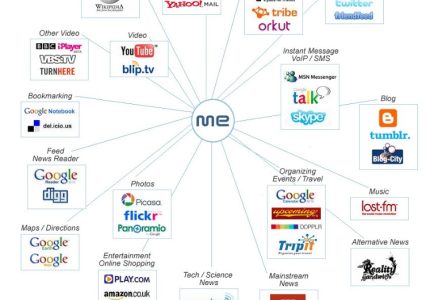Understanding Website Design
Understanding website design is essential for creating an engaging and user-friendly online presence. It involves combining visual aesthetics with functionality to ensure visitors have a positive experience. Effective website design not only attracts visitors but also guides them easily through your content, helping to achieve your goals. In this article, we will explore key aspects of website design and how they influence advertising and online success.
Definition and Importance
Understanding website design involves creating visually appealing and user-friendly websites that effectively communicate a company’s message and facilitate easy navigation. It encompasses various elements such as layout, color schemes, typography, and imagery, all working together to enhance the user experience. Well-designed websites are crucial for establishing credibility and attracting visitors, ultimately leading to increased engagement and conversions.
Key Principles of Effective Design
Understanding website design is essential for creating an engaging and functional online advertising platform. Effective website design ensures that visitors can easily navigate, comprehend the message, and take desired actions, ultimately boosting campaign success.
- Simplicity: A clean and uncluttered layout helps users focus on the core message without distractions.
- Visual Hierarchy: Use size, color, and placement to emphasize important elements like call-to-action buttons or key information.
- Consistency: Maintain uniform fonts, colors, and styles throughout the website to build trust and brand recognition.
- Responsiveness: Design for various devices and screen sizes to provide an optimal experience everywhere.
- Speed Optimization: Ensure quick loading times to reduce bounce rates and improve user experience.
- Clear Call-to-Action: Guide visitors towards desired actions with prominent and persuasive prompts.
- Readable Content: Use legible fonts and appropriate spacing to enhance readability and keep users engaged.
- Navigation Ease: Simplify menu structures and ensure intuitive pathways to find information quickly.
Applying these key principles in website design can significantly improve the effectiveness of online advertising campaigns, leading to higher conversions and better brand perception.
Types of Website Designs
Website design plays a crucial role in attracting and engaging visitors, which is essential for effective advertising. Different types of website designs cater to various business goals and user preferences, ensuring a memorable online presence. Understanding these various styles can help businesses choose the best approach to showcase their products or services and maximize their advertising impact.
Static vs. Dynamic Websites
When considering website design for your online presence, understanding the difference between static and dynamic websites is essential. Static websites consist of fixed content that remains the same for all visitors unless manually updated by a developer. They are simple to create and often used for informational purposes, such as portfolios or small business pages. Dynamic websites, on the other hand, generate content in real-time based on user interactions or database information. These sites are more versatile and suitable for e-commerce platforms, social networks, and large-scale applications, offering personalized experiences and easier content management. Choosing between static and dynamic design depends on the goals, complexity, and scale of your website, ensuring an effective online advertisement strategy that engages visitors and meets your business needs.
Responsive Design
Website design plays a crucial role in attracting and engaging visitors, and understanding the different types of website designs can help create a more effective online presence. Among various design approaches, responsive design has become essential in ensuring a website looks great and functions well on all devices, from desktops to smartphones. Responsive design involves creating flexible layouts that adapt seamlessly to different screen sizes, providing users with a consistent and user-friendly experience. It typically uses fluid grids, flexible images, and CSS media queries to adjust content dynamically based on the device being used. This adaptability not only enhances user engagement but also improves search engine ranking, making responsive design a vital aspect of modern website development. Choosing the right design approach, especially responsive design, is key to creating websites that are visually appealing, functional, and accessible to a broad audience.
Minimalist and Modern Styles
In website design, various styles cater to different user experiences and aesthetic preferences. Minimalist and modern styles are two popular approaches that emphasize clean, functional, and visually appealing layouts. Minimalist design focuses on simplicity, utilizing ample white space, limited color palettes, and straightforward typography to create an uncluttered and easy-to-navigate interface. This style enhances user focus and speeds up load times, making it ideal for brands that want to convey elegance and clarity.
Modern website design, on the other hand, incorporates current trends such as responsive layouts, dynamic visuals, and innovative interfaces. It often features bold typography, vibrant color schemes, and interactive elements to engage users and provide a fresh and contemporary look. Together, minimalist and modern website designs offer versatile options to create attractive and user-friendly websites tailored to diverse marketing goals and audience preferences.
Elements of a Successful Website Advertisement
Creating an effective website advertisement requires a combination of eye-catching design, clear messaging, and strategic placement. Elements such as compelling visuals, concise and persuasive text, and a prominent call-to-action work together to attract and engage visitors. Understanding these key components can significantly enhance the success of online advertising campaigns and drive greater user interaction with your website.
Clear Call-to-Action (CTA)
A successful website advertisement effectively captures attention and guides visitors toward desired actions through a clear call-to-action (CTA). It should include compelling headlines that immediately convey the main benefit or value proposition. Engaging visuals and concise messaging help communicate the offer quickly and persuasively. The CTA itself must be prominent, using contrasting colors, strategic placement, and action-oriented language like “Sign Up Now,” “Get Started,” or “Learn More” to encourage immediate response. Additionally, ensuring that the CTA stands out from other elements on the page and is accessible across devices enhances user experience and effectiveness. Combining these elements creates a cohesive and persuasive advertisement that drives user engagement and conversions.
Eye-Catching Visuals
Eye-catching visuals are essential elements of a successful website advertisement, as they capture the audience’s attention immediately and convey the message effectively. Using bold colors, striking images, and clear graphics helps to make the ad stand out in a crowded online space. Visuals should align with the brand identity and evoke emotions that encourage viewers to take action.
Additionally, high-quality images and professional design ensure credibility and appeal. Incorporating visual hierarchy guides the viewer’s eye through the ad, emphasizing the most important information such as offers, call-to-action buttons, or key messages. Combining these elements with consistent branding creates a memorable and persuasive advertisement that drives engagement and conversions.
Concise and Persuasive Copy
A successful website advertisement hinges on concise and persuasive copy that captures attention immediately. Clear messaging highlights the key benefits and value propositions, making it easy for visitors to understand what is offered. Using compelling headlines and calls-to-action guides users towards desired interactions, increasing engagement and conversions. Incorporating relevant keywords enhances visibility, while a tone that resonates with the target audience builds trust and interest. Well-crafted copy ensures that the message is impactful, memorable, and drives users to take action.
Design Tools and Technologies
Design tools and technologies play a crucial role in creating engaging and effective websites for advertising campaigns. They enable designers to craft visually appealing layouts, user-friendly interfaces, and interactive elements that capture audience attention. By leveraging advanced software and innovative techniques, website designers can develop compelling digital advertisements that enhance brand visibility and drive results.
Popular Website Builders
Effective website design relies on a variety of tools and technologies that enable developers and designers to create visually appealing and functional sites. Popular design tools include Adobe Photoshop, Sketch, Figma, and Adobe XD, which facilitate wireframing, prototyping, and graphic design. Web development technologies such as HTML, CSS, and JavaScript form the backbone of creating responsive and interactive websites. Additionally, frameworks like Bootstrap and Tailwind CSS help streamline the styling process and ensure consistency across devices. When it comes to building websites quickly and efficiently, many opt for popular website builders like WordPress, Wix, Squarespace, and Shopify. These platforms offer user-friendly interfaces, customizable templates, and integrated hosting options, making website creation accessible even for those with minimal coding experience. Leveraging these tools and technologies is essential for designing compelling websites that effectively promote products or services, such as advertisements, and attract potential customers.
Design Software and Tools
Effective website design relies heavily on a combination of advanced tools and software that streamline the creative process and enhance visual appeal. Modern designers utilize a variety of design tools to create engaging layouts, intuitive user interfaces, and captivating graphics that attract visitors and promote advertising campaigns.
Design software such as Adobe Photoshop, Illustrator, and XD are instrumental in crafting detailed visuals and prototypes. These tools enable designers to experiment with color schemes, typography, and layout structures, ensuring that the website aligns with branding and campaign goals. Additionally, design tools like Figma and Sketch foster collaboration, allowing teams to work simultaneously on projects and make real-time adjustments. Recent advancements have also seen the integration of prototyping tools like InVision and Marvel, which facilitate user testing and feedback collection before final implementation, ultimately leading to more effective website advertisements.
HTML, CSS, and JavaScript
Effective website design relies heavily on a combination of essential tools and core technologies such as HTML, CSS, and JavaScript. HTML provides the structure of the webpage, enabling developers to organize content logically and accessibly. CSS enhances the visual appeal by styling elements, controlling layout, colors, fonts, and responsive design features to ensure the site looks great on all devices. JavaScript adds interactivity and dynamic functionality, allowing websites to respond to user actions, load content seamlessly, and provide engaging experiences.
Best Practices for Website Design Ads
Effective website design ads play a crucial role in attracting and engaging potential visitors. By implementing best practices, businesses can create compelling advertisements that highlight their site’s features, enhance brand awareness, and drive traffic. Focusing on clear messaging, eye-catching visuals, and a strong call-to-action ensures that ads resonate with audiences and deliver maximum impact.
Target Audience Analysis
Effective website design ads should prioritize clear communication of their message while appealing to the target audience’s preferences and needs. Understanding the target audience involves analyzing their demographics, interests, online behavior, and pain points to tailor ad content that resonates and drives engagement. Incorporating visually appealing elements, such as high-quality images and consistent branding, helps attract attention and convey professionalism. It’s also essential to use compelling headlines and concise copy that highlight the unique benefits of the website design services offered. Testing different ad formats and messaging strategies allows marketers to optimize performance and ensure that campaigns effectively reach and influence the intended audience.
Consistency in Branding
Effective website design ads should emphasize consistency in branding to build trust and recognition among visitors. Using uniform colors, fonts, and imagery across all advertisement materials reinforces brand identity and creates a cohesive user experience. Clear and compelling messaging aligned with the brand’s core values helps convey the intended message efficiently. Incorporating your logo and brand elements consistently across ads ensures that viewers instantly associate the ad with your brand, increasing recall. Additionally, maintaining a professional and clean layout directs focus toward your key messages and call-to-actions, enhancing engagement and conversion rates. Regularly updating ad designs while preserving brand elements keeps the content fresh without compromising brand recognition.
Mobile Optimization
Creating effective website design ads requires a focus on visual appeal, user experience, and compatibility across devices. To maximize engagement and conversions, advertisers should adhere to best practices that highlight the importance of mobile optimization and compelling design elements.
- Ensure your ad design is clean and uncluttered, emphasizing key messages with clear visuals and concise text.
- Use high-resolution images and attractive color schemes that align with your brand identity to capture attention.
- Incorporate strong call-to-actions that are easy to locate and understand, guiding users toward desired actions.
- Optimize ads for mobile devices by using responsive layouts that adapt seamlessly to different screen sizes.
- Test your ads across various devices and browsers to identify and fix any display or functionality issues.
- Keep file sizes small without sacrificing quality to reduce load times, which is critical for mobile users.
- Leverage animated or interactive elements sparingly to enhance engagement without overwhelming viewers or slowing down performance.
- Include clear branding to reinforce recognition and trustworthiness in the eyes of viewers.
- Use targeting options to display your ads to relevant audiences, ensuring higher relevance and effectiveness.
- Regularly analyze ad performance metrics and make data-driven adjustments to improve results continuously.
Loading Speed and Performance
Effective website design ads should prioritize loading speed and overall performance to enhance user experience and drive engagement. Optimizing images by compressing them without losing quality reduces load times and prevents slow page loads that can deter visitors. Utilizing clean, minimal code and avoiding unnecessary scripts helps streamline website performance and ensures faster rendering. Implementing a content delivery network distributes content across multiple servers worldwide, reducing latency and improving load times for users globally. Regularly testing website speed through tools like Google PageSpeed Insights allows for identifying and addressing performance bottlenecks. Additionally, employing responsive design ensures that ads and content are optimized for various devices and screen sizes, maintaining quick load times across desktops, tablets, and smartphones. Combining these best practices in design and technical optimization helps create engaging, fast-loading websites that effectively support advertising efforts and improve overall user satisfaction.
Creating an Effective Website Design Advertisement
Creating an effective website design advertisement is essential for attracting potential clients and showcasing your unique skills. A well-crafted ad highlights your creativity, technical expertise, and understanding of current trends in web design. By focusing on clear visuals, compelling messaging, and a strong call to action, you can stand out in a competitive market and demonstrate how your services can transform online presence for businesses.
Planning and Strategy
Creating an effective website design advertisement begins with thorough planning and strategy to capture the target audience’s attention and convey the brand message clearly. Understanding the core objectives of the website, such as increasing conversions or enhancing user experience, guides the design approach and messaging. It is essential to identify the target demographic, their preferences, and their online behavior to tailor the advertisement accordingly.
Developing a compelling visual layout that highlights the unique features and benefits of the website is crucial. Use engaging images, clear calls-to-action, and concise copy to communicate the value proposition effectively. Incorporating branding elements consistently ensures recognition and reinforces brand identity.
Strategically choosing the advertising channels and formats, such as social media ads, banner ads, or email campaigns, maximizes reach and impact. A/B testing different ad versions helps determine the most effective messaging and visuals, guiding ongoing optimization efforts. Overall, a well-thought-out plan that aligns design, messaging, and distribution ensures an advertisement that attracts and converts potential clients or users, ultimately driving the success of the website.
Design Layout and Structure
Creating an effective website design advertisement begins with showcasing a clean and visually appealing layout that highlights the key features of your design services. Use compelling visuals and concise messaging to attract potential clients. The advertisement should emphasize the importance of a well-structured layout, illustrating how organized content improves user experience and engagement. Incorporate a clear hierarchy within the design, with attention-grabbing headlines, supporting images, and a strong call-to-action that guides viewers toward their next step. Consider using a balanced structure that integrates whitespace effectively, making the ad easy to read and visually appealing. Ultimately, the goal is to communicate your expertise in crafting intuitive, attractive website layouts that meet clients’ needs and elevate their online presence.
Testing and Optimization
Creating an effective website design advertisement requires a clear understanding of your target audience and the key benefits of your design services. Highlighting your unique approach, creative process, and successful projects will attract potential clients. Use compelling visuals and concise messaging to communicate the value you offer in website design.
Testing and optimization are crucial to ensure your advertisement performs well and reaches the right audience. Implement A/B testing by creating multiple versions of your ad with different headlines, images, and calls to action. Analyze metrics such as click-through rate, conversion rate, and engagement to determine which version resonates best with viewers. Continuously refine your ad based on data insights to improve its effectiveness.

Tracking audience interactions and collecting feedback can provide deeper insights into what drives interest and conversions. Use analytics tools to monitor performance and make data-driven decisions for ongoing improvements. Regular testing and optimization ensure your website design ad remains impactful and competitive in a dynamic digital landscape.
Measuring Success of Website Ads
Measuring the success of website ads is essential for understanding their impact on audience engagement and overall marketing effectiveness. Analyzing key metrics such as click-through rates, conversions, and bounce rates helps marketers optimize campaigns and improve future ad strategies. By evaluating these performance indicators, businesses can determine how well their website ads are contributing to brand awareness and revenue growth.
Analytics and Metrics
Measuring the success of website ads is essential to understanding their effectiveness and optimizing future campaigns. Analytics and metrics provide valuable insights into user engagement, conversions, and overall return on investment. Key performance indicators include click-through rates, conversion rates, bounce rates, and time spent on the landing page. Tracking these metrics helps identify which ads resonate most with the target audience and whether they lead to desired actions, such as purchases or sign-ups. Utilizing tools like Google Analytics or advertising platform dashboards enables marketers to gather comprehensive data, analyze trends, and make informed decisions to enhance ad performance. Ultimately, continuous monitoring and analysis ensure that website ads contribute meaningfully to business goals and improve overall website effectiveness.
Conversion Rate Optimization
Measuring the success of website ads through Conversion Rate Optimization (CRO) is essential for understanding how effectively your advertising strategies drive user engagement and achieve desired outcomes. By analyzing key metrics such as click-through rates, bounce rates, and conversion rates, businesses can determine which ads resonate most with their audience and refine their approach accordingly. Implementing A/B tests allows for comparing different ad designs and messaging to identify top performers, ultimately maximizing return on investment. A well-optimized website design ad not only attracts visitors but also guides them seamlessly toward taking valuable actions, making continuous measurement and adjustment vital components of a successful advertising campaign.





